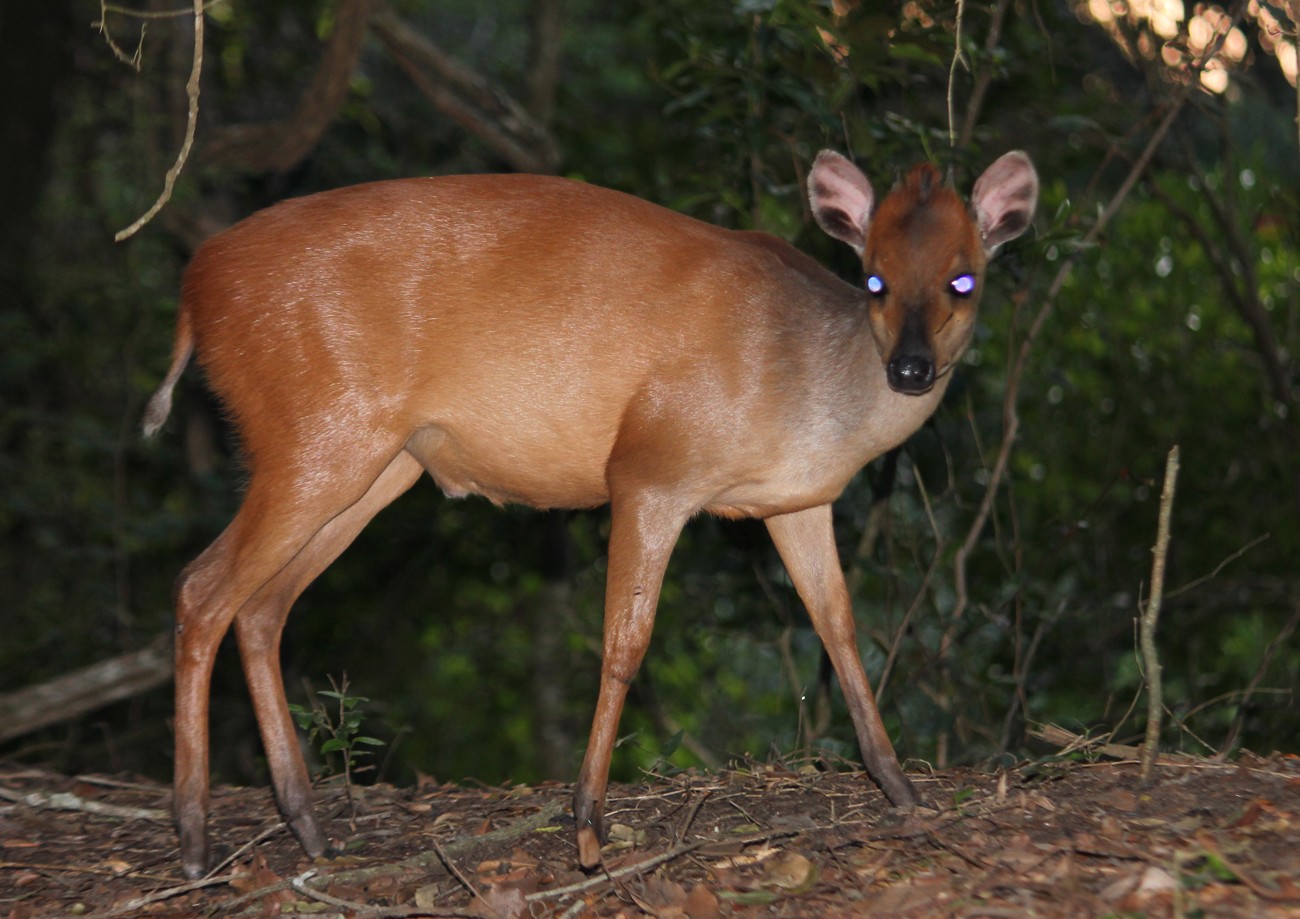Red forest duiker
A species of Forest duikers, Also known as Natal red duiker Scientific name : Cephalophus natalensis Genus : Forest duikers
Red forest duiker, A species of Forest duikers
Also known as:
Natal red duiker
Scientific name: Cephalophus natalensis
Genus: Forest duikers
Content
Description General Info
 Photo By Ryanvanhuyssteen , used under CC-BY-SA-4.0 /Cropped and compressed from original
Photo By Ryanvanhuyssteen , used under CC-BY-SA-4.0 /Cropped and compressed from original Description
Red forest duikers have a body length of up to 1 m, a typical shoulder height of 43 cm, and an average mass of 14 kg. Both sexes have short, straight horns about 6 cm long, although in females they may be smaller in size. Towards the base, the horns have coarse rings and longitudinal striations, but they are smooth towards the tips. The longest recorded length of horns for the red forest duiker is 11 cm. The red forest duiker is a rich reddish-brown in color, although the underparts are typically paler. The hairs on the chin, throat, and insides of the ears are commonly a shade of white. A tuft of reddish-brown and black hairs grow between the horns, and the tail has a white tip. A notable characteristic of the Natal red duiker's appearance is its hunched back, with front legs shorter than the hind legs. These longer hind legs are in a crouched position, which serves as an advantage when the duiker senses danger and needs to flee by allowing the individual to leap quickly into nearby brush. 
General Info
Lifespan
10-12 years
Diet
Red forest duiker primarily satisfies its nutritional requirements through browsing. It feeds predominantly on leaves, shoots, and from time to time, fruits, but also consumes insects and small animals, displaying mixed feeding strategies.
Appearance
Red forest duiker is a small, stocky antelope with a prominent hump over the shoulders. Its coarse fur is mostly chestnut-brown peppered with white, transitioning to lighter hues on the underparts. Notable features include pointed ears, large eyes, and short, straight horns visible in both sexes. The female of the species is slightly larger than the male.
Behavior
Red forest duiker is a solitary, nocturnal animal. It primarily feeds on leaves, fruits, and shoots while showing marked crepuscular activity. The species uses dung and gland secretion to mark its territory, typical of many ruminants. Adapting to dense forest environments, it employs a freeze and flee strategy against predators.
Population
Decreasing